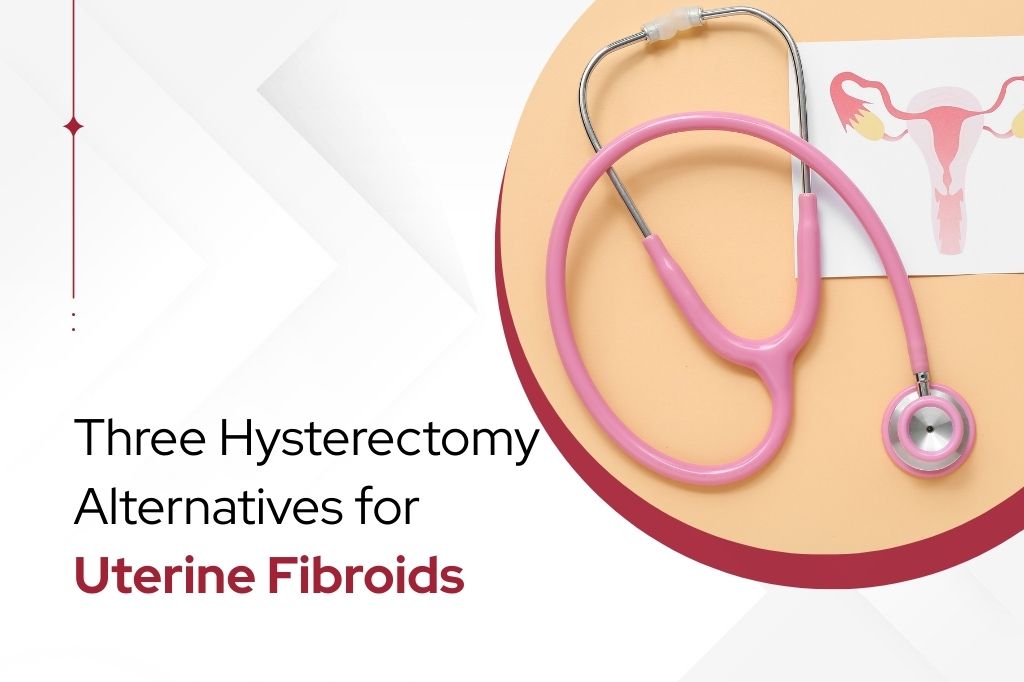For many women, hearing the words “you have fibroids” can bring more questions than
answers, especially when a hysterectomy is presented as the primary or only solution. While
uterine fibroids are incredibly common, the recommended treatment path doesn’t have to lead straight to surgery.
At the Georgia Vascular Institute’s Fibroid Treatment Center, we believe that informed patients make empowered decisions. If you’ve been diagnosed with fibroids or suspect you may have them, there are several effective, uterus-preserving alternatives to hysterectomy worth exploring. Whether you’re hoping to avoid major surgery, preserve fertility, or simply learn more about your options, this guide is for you.
Understanding Fibroids and Why Hysterectomy Isn’t Your Only Option
Uterine fibroids are non-cancerous tumors that grow in or around the uterus. They can cause a
range of symptoms, including heavy menstrual bleeding, pelvic pain or pressure, bloating,
frequent urination, and even fertility challenges. While many doctors recommend a hysterectomy, a surgical procedure that removes the uterus, it’s not always necessary. A hysterectomy may be the right decision for some, but it’s a life-altering surgery that comes with a long recovery and the loss of the ability to carry children. Unfortunately, many women aren’t told there are less invasive, effective treatments available.
“I wish someone had told me about uterine fibroid embolization. It could have saved me from losing my uterus.”
– Patient, age 42
Before deciding on surgery, it’s important to understand all of your treatment options, especially the non-surgical ones.
Alternatives to Hysterectomy for Uterine Fibroids
Here are three alternatives that may help relieve your fibroid symptoms without removing your uterus, allowing you to preserve fertility, avoid major surgery, reduce heavy bleeding, alleviate pelvic pain, and maintain your overall reproductive health. These uterine fibroid treatment options provide effective relief while helping many women save their uterus and, in some cases, keep the possibility of having children.
- Uterine Fibroid Embolization (UFE)
Uterine Fibroid Embolization (UFE) is a minimally invasive, non-surgical procedure performed by an interventional radiologist. Using image guidance, tiny particles are injected into the uterine arteries to block blood flow to the fibroids, causing them to shrink over time.
-
- Performed as an outpatient procedure
- Recovery time is typically less than a week
- Preserves the uterus
- Provides long-term relief of symptoms for the majority of patients
- At Georgia Vascular Institute, UFE is one of our most effective uterine fibroid treatment options.
2. Myomectomy
This surgical procedure removes the fibroids but leaves the uterus intact. Myomectomy can be performed in several ways, including laparoscopically, hysteroscopically, or through an open abdominal incision, depending on the size and location of the fibroids.
-
- Preserves the uterus
- Often recommended for women planning future pregnancies
- Longer recovery time than uterine fibroid embolization (UFE)
3. Watchful Waiting
In some cases, fibroids don’t cause noticeable symptoms and may not require immediate treatment. If your fibroids are small and not impacting your quality of life, monitoring them over time with regular checkups may be appropriate.
-
- Best for asymptomatic or minimally symptomatic fibroids
- No medication or procedure required
- Can delay or eliminate the need for future intervention
Why Choose Georgia Vascular Institute?
At Georgia Vascular Institute’s Treatment Center, we specialize in non-surgical fibroid treatment and advanced interventional procedures that help women avoid major surgery when possible. Led by Dr. Kevin Carson, a board-certified interventional radiologist, our team provides compassionate, expert care using the latest minimally invasive treatment options for uterine fibroids in Atlanta.
We work with each patient to create a personalized care plan that considers their symptoms, their goals, and their future.
“I didn’t know there were other ways to treat uterine fibroids. If I could go back, I’d ask more questions and be more informed of alternative procedures before opting for a hysterectomy.”
– Patient, age 44
Take the Next Step: Know Your Options Before Choosing Surgery
If you’ve been told a hysterectomy is your only option for fibroids, you’re not alone, but you do
have choices. Understanding all your treatment options is a critical part of making the right decision for your health and future.
“I was 35 and wanted kids. My doctor said a hysterectomy was the only way. I found Dr. Carson and learned about Uterine Fibroid Embolization. Now, I’m pregnant with my first baby!”
– Patient, age 36
We’re here to help you explore the safest, most effective, and least invasive treatment options for your needs. You don’t have to settle for major surgery if it’s not the right path for you. Uterine Fibroid Embolization and other non-surgical treatments may offer the relief you need, without the risks and recovery time of a hysterectomy.
If you’re ready to explore your options and learn more about alternative treatments for uterine fibroids, please contact our office at (770) 506-4007 to schedule an appointment. Compassionate, expert care is just a phone call away.

